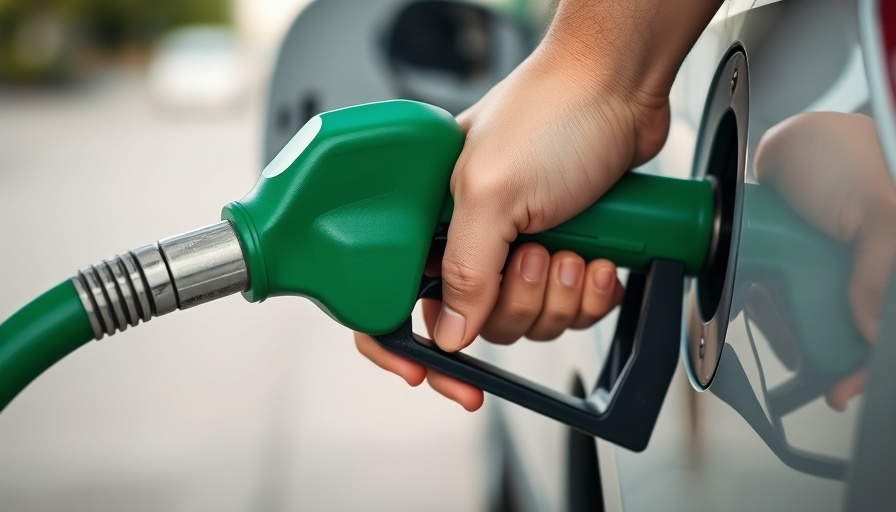
Gas Prices Ease Amid Lower Oil Costs
The recent drop in national gas prices to an average of $3.11 per gallon has caught the attention of many drivers across the nation. This change is attributed primarily to a decline in oil prices, making fuel more affordable for consumers. However, the gas prices aren't completely stable. They might fluctuate soon due to the seasonal switch to more costly summer-grade gasoline and potential market reactions tied to tariffs.
Understanding Fuel Price Trends
The easing of gas prices aligns with forecasts from the U.S. Energy Information Administration (EIA), which indicates that retail gasoline prices are expected to continue decreasing throughout 2025 and 2026 due to lower crude oil prices. The forecast suggests that gas prices could fall by about 11 cents per gallon in 2025 and an additional 18 cents in 2026. This trend reflects a notable shift from the dynamics observed in the previous years, where gas prices had surged significantly.
The Impact of Transitioning Fuels
As we approach summer, consumers should be aware of the impact of these transitionary phases on fuel prices. The production of summer-grade gasoline is inherently more expensive than its winter counterpart, which can lead to higher prices at the pump. During this time, automotive enthusiasts planning for road trips must be prepared for potential variations. Making fuel budgeting a part of your travel planning can assure you stay within your budget during vacations.
Strategies for Car Owners
The management of auto ownership costs becomes especially relevant with fluctuating gas prices. Drivers can mitigate the financial impact of fuel costs by adopting fuel-efficient practices, such as regular vehicle maintenance and utilizing apps that help track gas prices. Hybrid and electric vehicles are becoming increasingly popular in this climate, offering long-term savings due to lower fuel expenses.
Future Predictions: What's Next?
Looking ahead, it seems promising for consumers as numerous analysts suggest that the trend of lower oil prices will continue. This is significant because the costs of oil directly influence gasoline prices. Furthermore, developments in electric vehicle infrastructure and an increase in the fuel-efficient fleet will likely lead to reduced gasoline consumption, creating a feedback loop that could stabilize or even reduce prices in the long run.
The economic landscape will also play a crucial role. While gas prices are going down, shifts in federal policies surrounding energy and environmental standards will need to be closely monitored. These will directly affect both consumers and the automotive industry as it navigates these transformative periods.
Final Thoughts on Automotive Trends
As gas prices transition into a neutral phase, it's crucial for automotive consumers and enthusiasts to stay informed about market changes. Fuel prices remain an essential part of the overall equation in auto ownership and transportation. By adapting strategies that emphasize efficiency and forward-thinking investments like electric vehicles, consumers can enjoy road trips and daily commutes without the anxiety of rising fuel costs becoming a larger burden.
In summary, staying attuned to gas price movements connected to oil markets, and embracing automotive technologies, is vital for long-term savings and sustainable transportation choices.
 Add Row
Add Row  Add
Add 




 Add Row
Add Row  Add
Add 

Write A Comment